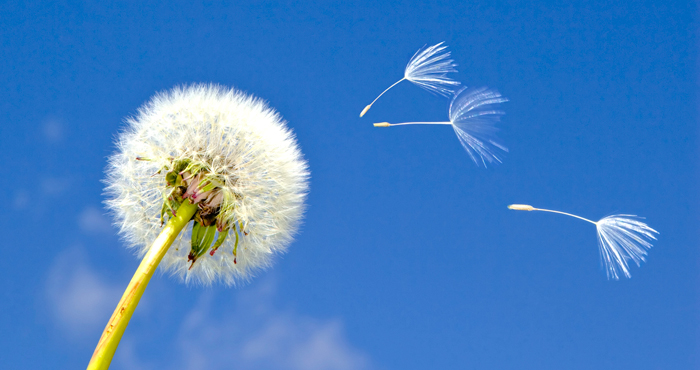
There are three sources of pollen and people can be allergic to one or all of the following:
Grass pollen – released during the end of spring and beginning of summer (May to July) and approximately 90 per cent of people suffer from some type of allergy.
Tree pollen – released in the springtime (February to June) and approximately 25 per cent of people are allergic.
Weed pollen – released between early spring and late autumn (April to September).
Pollen Count
Most people are aware of the pollen count and that if pollen is high then symptoms are likely to be worse, but many people may not be aware how the pollen count is calculated. Air samples are collected in traps placed on buildings two or three storeys high, they are placed at this height as it gives a better indication of the pollen in the air from local and distant sources. The air is sucked into the traps, at a specific rate, and pollen is collected on sticky tape. The pollen is then analysed under a microscope to count how many grains are contained within every cubic meter of air. Samples are gathered every two hours and averaged out over a 24 hour period to calculate the pollen count.
Pollen Forecasts
The pollen forecasts are given as low, moderate, high and very high during the weather forecasts in spring and summer.
Low: fewer than 30 grains of pollen per cubic metre of air.
Moderate: 30- 49 grains of pollen per cubic metre of air.
High: 50-149 grains of pollen per cubic metre of air.
Very high: 150 or more grains of pollen in every cubic metre of air.
Symptoms usually start when the pollen count hits moderate. The weather and time of day has an impact on the production and distribution of pollen as it spreads easier on humid or windy days. If it rains then pollen is cleared from the air and the levels fall. As the temperature rises in the morning pollen is carried upwards, whilst as the evening cools the pollen comes closer to the ground giving peak symptoms in the morning and evening. Plants release pollen in the early morning and as the day warms more flowers open and release more pollen.
This results in pollen counts being the highest in the early morning and evening on sunny days. Some people can become allergic to mould spores which are tiny particles released by fungi and inhaled, similar to pollen. Fungal spores are more common in wet or damp weather and can grow indoors in damp places.
